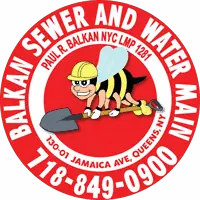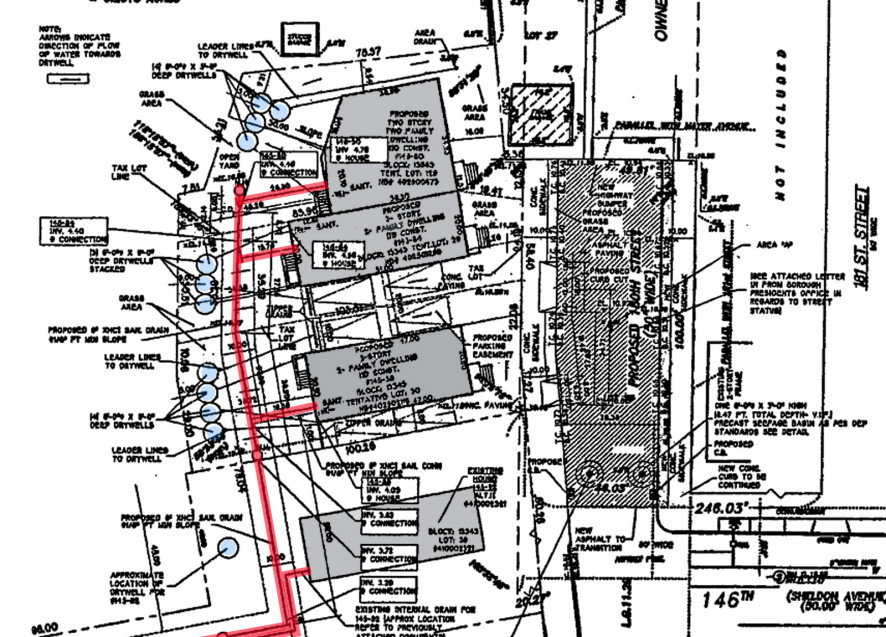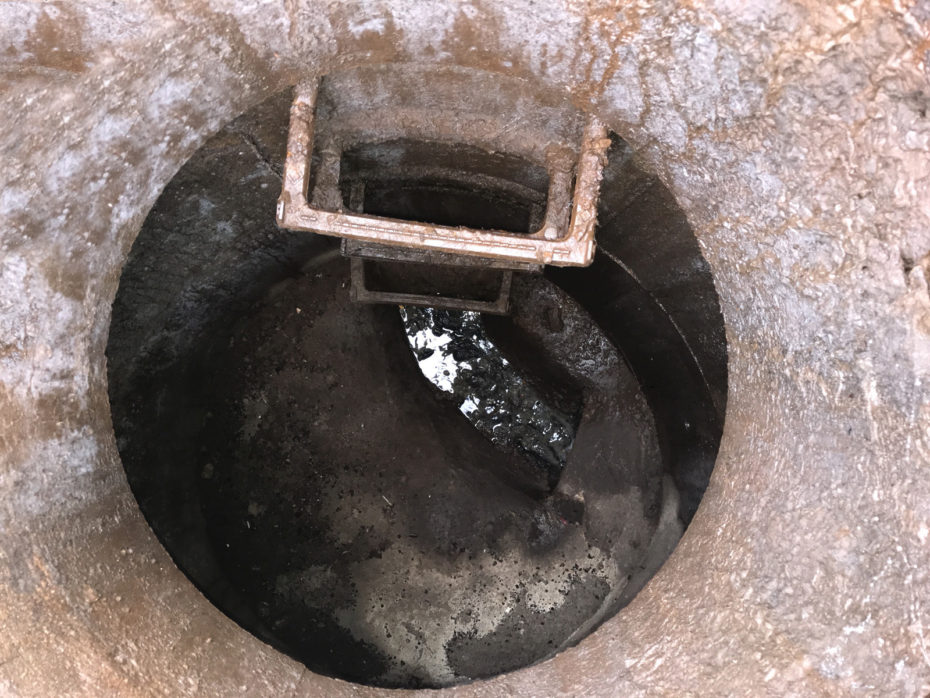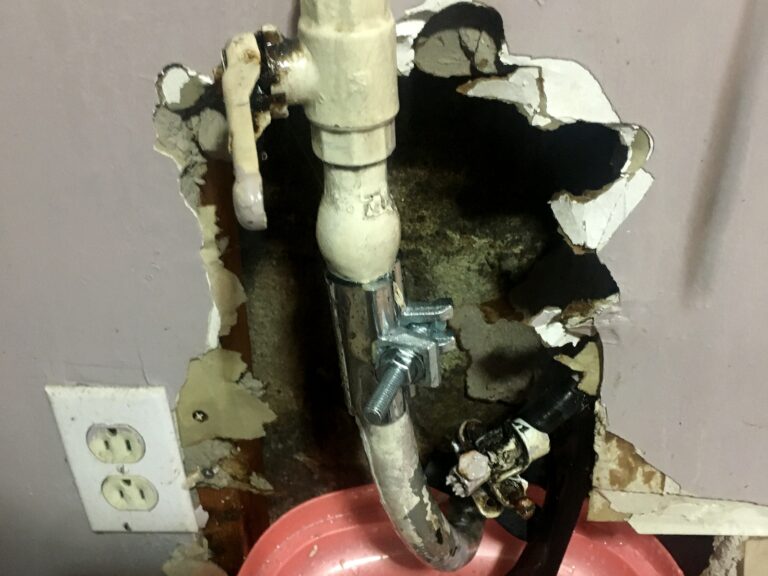Balkan Sewer And Water Main was recently awarded a contract to build a common sewer line for three new houses. A common sewer in this case meant that one house sewer will act as a shared sewer for three homes. As undeveloped land becomes ever more rare in New York City, common sewer lines become more frequently required. This is because of various factors that prohibit each new house from having it’s own individual house drain line when odd tracts of land are developed.
A particular new sewer project is a case in point of the above. As a matter of fact this project also required a new private internal water main. The internal water main was needed in order to supply water service lines to each of the houses.
What is a common sewer line?
A common sewer line is a lateral house drain connection that is shared by more than one house. Unless very large buildings, or a great many houses, are connected the size of the shared sewer line is still 6″ in diameter. The material is typically extra heavy cast iron pipe. Extra heavy cast iron pipe is also typical for almost all house connections in NYC. When more than two houses share a common sewer line a clean-out manhole is required at the property line. Clean-outs installed every 100′ are typical. The clean-out type and size are shown on the approved plan detail, known as an attachment F.
When is a common sewer line appropriate?
A common sewer line is typically designed when a public drain system does not front all of the buildable lots. In some cases, like this particular case, a public sewer may not front any of the buildable lots. When a public drain system does not front a property an easement is required.
An easement allows for the line to be installed through a neighboring property that does have a public sewer fronting it’s property. An easement grants access to a tract of land in order to install the common sewer line, and also future access if maintenance is required.
Who pays the cost of repairing a shared sewer line?
Common sewer lines frequently result in disputes when repairs or maintenance are needed. A section of the common sewer line may become blocked or broken at a point fronting only one of the houses.
Owners can wrongfully assume that whoever has the problem fronting their property is responsible. Likewise, if that unfortunate individual has sewage backing up into their property, their neighbors might be reluctant to incur any costs associated with the repair work. However, and on the contrary, when a shared sewer line needs repair or maintenance the costs are divided by all properties connected to the line. Situations that involve maintenance or repair are usually clarified in what is known as a Homeowners Association document.
Homeowners Association Documents help avoid cost of repair or maintenance disputes
Years ago the responsibility for maintenance of a shared sewer line were not clearly defined. These cases usually involve a shared line for a storm drain servicing a community driveway. Great disputes could arise, with the property or properties most greatly affected by the drain line defect battling it out with those unaffected or left undamaged by waste water or rain water.
Nowadays shared or common sewer lines are not approved for permits unless there is a Homeowners Association document drawn up that clearly specifies responsibility.
What is a clean-out manhole?
A clean-out manhole, as it implies, allows for maintenance of a drain line. The best example of a clean-out manhole are those found on every NYC street. In NYC manholes also serve the purpose of allowing for the venting of waste water gases. When it comes to a common sewer line or most house drain lines a simple clean-out may be required. A typical clean-out is just an extension up to grade of a branch off of the sewer line to allow for cleaning.
A manhole clean-out is much for expensive in terms of material and installation cost. They are usually purchased from a precast concrete supplier. The manhole consists of 4′ wide rings of an appropriate height, with steps built in. They can be placed on top of one another to form a water-tight bond. On top of the highest ring is then placed a top slab which has an opening to allow for the manhole ring and cover.
Heavy equipment is required to install a manhole, and also a great deal of expertise. New manholes must be perfectly level and flush with the surrounding area.
The trough of a manhole is an important component of the installation
Perhaps one of the most important aspects of a manhole is the bottom, known as the trough. The soil pipe must be laid completely through the bottom of the manhole, with the bottom most ring fitting around the pipe. Then an approved concrete mix is poured to the flow line of the pipe. It is then that the top half of the pipe is cut out to create the opening for maintenance and for waste water gases to vent.
On this particular project four manholes were required. This was due to the length of the run and the fact that the area on top of the common sewer line was to be made into a roadway. In other cases where the area on top of the new drain system is not be meant for vehicular traffic, a simple clean-out or multiple clean-outs can usually be used.
Are there different types of common or shared sewer lines?
Similar to all typical house drain lines there are different types of common shared sewer lines. While the material required to install them is the same, typically extra heavy cast iron, they differ greatly in their purpose. They fall into three categories which are:
- Sanitary common sewer line
Like the above referenced project a sanitary drain system is a system dedicated to sanitary only waste water. Rain or storm water flow is not allowed to be connected to such a system. In the case of this particular project a system of dry wells was designed and installed to accommodate all of the rainwater runoff from each house and any paved areas.
Dry wells must be carefully designed using calculations that ensure the dry wells can handle all of the flow of water. Dry wells are also referred to as a retention system because they retain the rain water flow, as opposed to a detention system which only holds the water for a period of time. With a detention system the rainwater eventually is released into the public sewer system.
- Storm common sewer line
A storm sewer system is identical to a sanitary system except that it is solely for rain or storm water flow. They are most commonly found in community driveways. Unlike a sanitary house drain a storm drain is not mandatory for every house. As described above, a dry well can be used in lieu of a storm sewer when no public storm sewer is available for connection.
- Combined common sewer line
As it implies a combined common sewer line can accommodate both sanitary waste water and storm water. Storm water flow and sanitary water flow are each in separate lines inside the property.
It is typical for a combined system to have a manhole at the property line where the two different flows of water are combined together. The reasoning for this is that if a separate public sanitary or storm system is installed at later date, dedicated house lines can then be extended from the combined manhole. Having the combining manhole at the property line saves the cost of ever having to rework any of the inside drain line system.
New York City house sewer line work
House sewer line installations require skill and knowledge to be installed properly and in accordance with a NYC DEP approved site connection plan. All new lines, replacements, repairs, or common sewer lines must pass a rigorous NYC DEP inspection process. Safety standards must also be met. Which means a job can never be rushed along at the risk of poor workmanship or a job-site injury.
Being able to meet all of the required standards, yet maintain the lowest price structure in the plumbing industry, has allowed Balkan to become the premier sewer contractor in New York City. There is a reason why year-in and year-out more New Yorkers choose Balkan than any other sewer and water main contractor.
Call us day or night for expert advice, a free site visit, or a no-obligation written estimate of required work. We are here for you since 1952.











